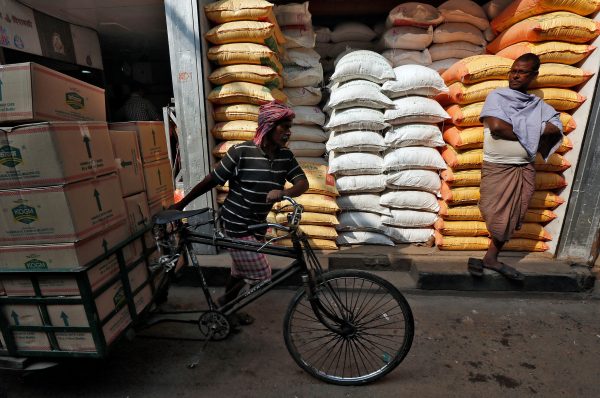in advance of the assembly elections presently unfolding in five states. But Rahul Gandhi and other opposition leaders could not find a single objectionable element in the budget to combat Modi’s Bharatiya Janata Party and its relatively favourable electoral prospects. Gandhi’s only charge was that it was a pointless budget that could not bring the bullet train to India.
The budget has stuck to the critical tasks of generating employment, promoting private investment, pushing up consumption and improving the delivery of subsidies and public services. Most importantly, it attempts a radical cleansing of the economy, which is necessary for India to mount a robust and equitable growth path in an environment of greater transparency, accountability and declining corruption.
The BJP-led National Democratic Alliance coalition government has learnt some valuable lessons from the budget experience of former prime minister Atal Bihari Vajpayee, who had to balance pursuing economic priorities and enhancing electoral prospects. The current government has used previous budgets to promote inclusion across the widest range of schemes and programs, including continuing the Mahatma Gandhi National Rural Employment Guarantee Act and opening the Jan Dhan accounts for promoting financial inclusion. The Modi–Jaitley duo has so far been steadfast in not ceding the left-of-centre space to Gandhi’s Indian National Congress and the sundry opposition. In the present budget they have boldly displayed their growth and investment credentials — critical for generating jobs for India’s teeming and aspiring youth.
Jaitley was cognisant of plummeting private corporate investment and non-food credit offtake from commercial banks coming down to a six-decade low. The share of investment in GDP has fallen to below 30 per cent — the lowest in years. Investment needed a boost. Jaitley has chosen to address the problem head-on by ramping up public capital expenditure by as much as 24.5 per cent over the last year. Hopefully this higher capital allocation is efficiently utilised for much-needed capacity expansion in infrastructure, agriculture and social sectors. And this should, in turn, spur private investment.
With the Reserve Bank of India keeping a hawk eye on inflation and declining costs of capital as a result of mounting bank deposits post-demonetisation, this budget may well have moved the Indian economy tantalisingly close to the sweet spot from which it could embark on a sustained high growth trajectory with macroeconomic stability and inclusion.
Foreign and domestic investor sentiment will hopefully be further reinforced by the government’s commitment to a new normal in the use of cash and squeezing out the parallel economy. By lowering the limit of anonymous cash donations to political parties from 20,000 rupees (US$300) to 2000 rupees (US$30) as recommended by the Election Commission, the budget has directly attacked the fountain-head of political corruption. By taking this unexpected and bold step, Modi has burnished his credentials as a fighter against black money and supporter of the honest worker.
There are also other budget measures for improving the ease of doing business. For instance, the carry-over period for minimum alternate tax credit has been extended from 10 to 15 years. Transfer pricing norms for domestic companies have been liberalised. And the Foreign Investment Promotion Board, which had come to signify a hurdle for foreign direct investment proposals, has been abolished.
Most importantly, the budget has slashed the corporate tax rate from 30 per cent to 25 per cent for small and medium enterprises with a turnover of less than 500 million rupees (US$7.4 million). These account for 96 per cent of companies and are predominantly responsible for fresh job opportunities, covering the entire gamut of economic activity.
Employment will also get a boost with a massive push given to affordable housing — a labour-intensive sector. Jaitley announced a clutch of measures including designating affordable housing under infrastructure status, high corpus for refinancing by the National Housing Bank, and relaxing the definition of affordable housing to 60 square metres except in four metro areas. These are over and above the interest rate subventions announced by Modi on 31 December 2016.
The budget also includes a reduction in personal income tax for the lowest taxable category from 10 per cent to 5 per cent, which will lead to a rise in consumption. But the finance minister should have taken a step further and extended the highest tax rate of 30 per cent to incomes over 2.4 million rupees (US$35,274). This would improve compliance and reduce tax avoidance without causing revenue loss.
All in all, this budget must be lauded by all stakeholders in the economy as well as by those who want India to be extricated from the quagmire of rising corruption, illegality and resultant criminality. India may well be on its way to completing the transition to a high middle-income country.
Rajiv Kumar is Senior Fellow at the Centre for Policy Research, New Delhi, and Founder Director of the Pahle India Foundation.
A version of this article was first published here in Mail Today.

